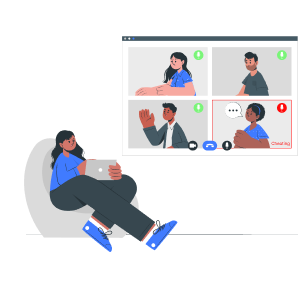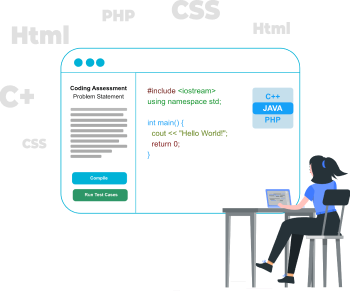
Online Exam Cheating Detection: Preventing Cheating for Fair and Accurate Assessments #
Online exams have become a popular method for assessing a wide range of skills and knowledge, including in academic, professional, and even recruitment contexts.
However, ensuring the security and integrity of these exams is critical in order to maintain fairness and accuracy. Online exam cheating can be a major concern, as it can undermine the validity of the assessment and compromise the results.
To address this issue, various mechanisms have been developed to prevent or detect cheating on online exams, such as secure browsers, per-question timers, facial recognition, image proctoring, video proctoring, and disabling navigation of questions during the exam process.
These tools can help to ensure that online exams are conducted in a fair and transparent manner, while also helping to maintain the credibility of the assessment process.
Secure browser: #
A secure browser is a specialized web browser that is designed to protect the security and integrity of an online exam. It prevents students from accessing any unauthorized resources or information during the exam, such as notes, textbooks, or the internet.
The secure browser is typically installed on the student’s computer and can only be used for the purpose of taking the exam.
Per question timer: #
A per-question timer is a feature that limits the amount of time a student has to complete each individual question on an online exam. This can help to prevent cheating by limiting the amount of time a student has to seek help or access unauthorized resources.
It can also help to ensure that all students have a fair and equal amount of time to complete the exam.
Facial recognition: #
Facial recognition technology can be used to prevent cheating on online exams by comparing the student’s face to a reference photo or video taken at the start of the exam.
If the facial recognition software detects any discrepancies, such as a different person taking the exam or the student using a disguise, it can trigger an alert and prevent the student from continuing the exam.
Image proctoring: #
Image proctoring is a method of monitoring students during an online exam using a webcam and artificial intelligence (AI) algorithms. The AI algorithms analyze the student’s behavior and surroundings in real-time, looking for any suspicious activity or attempts to cheat.
If the image proctoring system detects any potential cheating, it can alert the exam proctor and prevent the student from continuing the exam.
Video proctoring: #
Video proctoring is similar to image proctoring, but it uses live video feeds of the student during the exam instead of just still images. This allows the exam proctor to observe the student in real-time and intervene if necessary.
Video proctoring can be particularly effective in detecting cheating because it allows the proctor to see the student’s actions and surroundings more clearly.
Disabling navigation of questions: #
Disabling the navigation of questions during an online exam can help to prevent cheating by limiting the student’s ability to move back and forth between different questions or access unauthorized resources.
This can be done by hiding the navigation buttons or disabling the ability to go back to previous questions.


